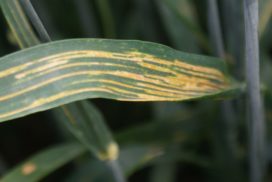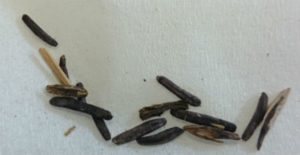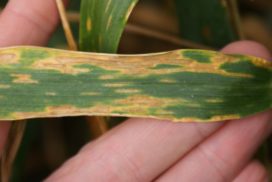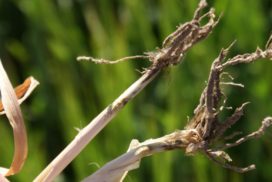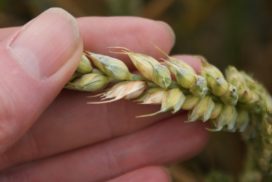Diseases of wheat
Leaf Stripe (Cephalosporium)
Cephalosporium leaf stripe is an increasing problem on farms in Scotland where wheat is grown on short rotations. Incidences of the disease have increased in recent years as a consequence of changes in cropping practice and weather patterns, in particular rainfall. Read more here.
Yellow Rust
Yellow rust is a major disease in wheat. Typical symptoms comprise small yellow pustules on the leaves. They commonly form in lines along the leaf. Look out for small pockets of affected plants in the spring. In severe cases, the leaves will appear bleached. Read more here.
Septoria tritici
Septoria tritici is currently the major disease in wheat. Although more resistant varieties, including Robigus have recently been added to the HGCA Recommended List, many varieties remain susceptible, including Consort. Issues concerning fungicide resistance have made it more of a challenge to manage in susceptible varieties. Read more here.
Common eyespot
Common eyespot is a fungal disease which attacks the stems of winter cereals. Winter wheat is affected most, but winter barley can also be affected. Spring crops and winter oats are not so badly affected by this disease. Read more here.
Sign up to the FAS newsletter
Receive updates on news, events and publications from Scotland’s Farm Advisory Service


